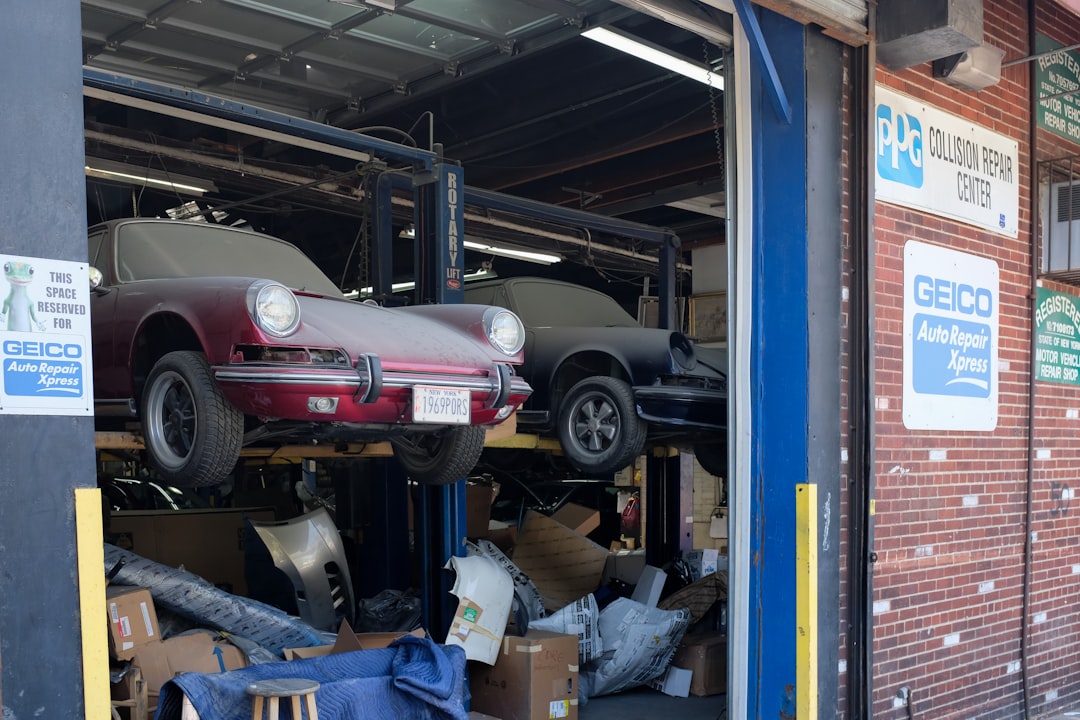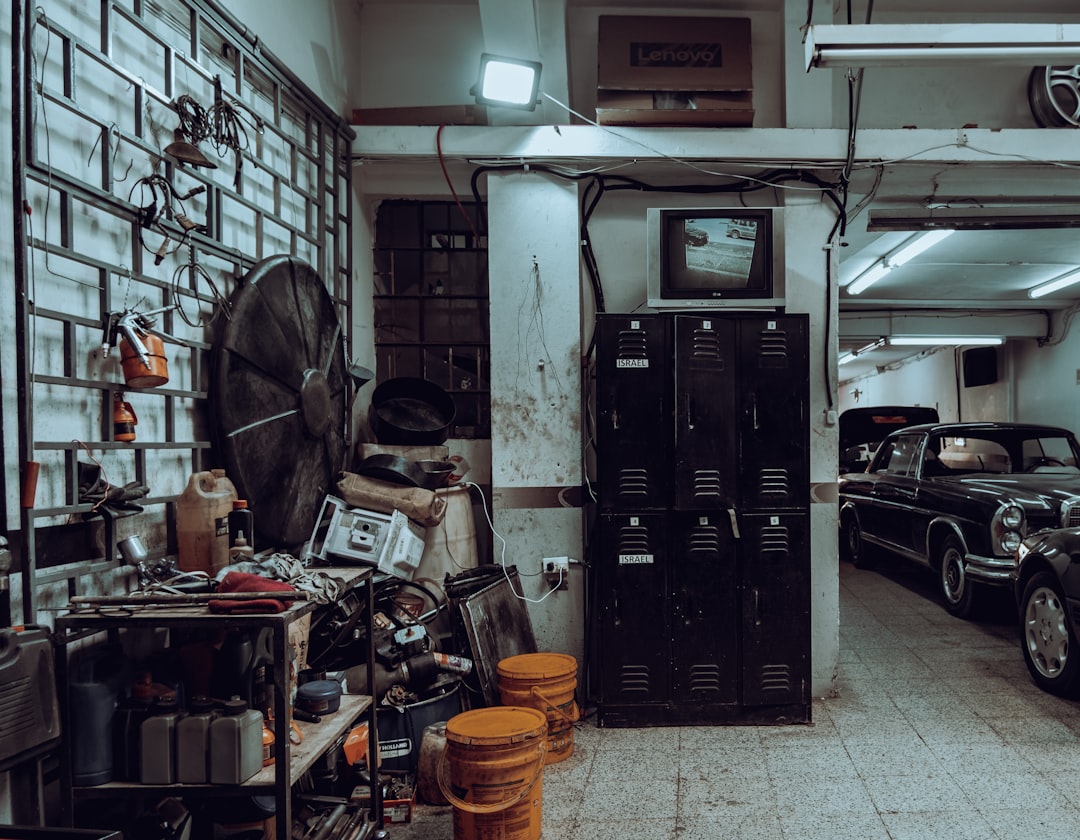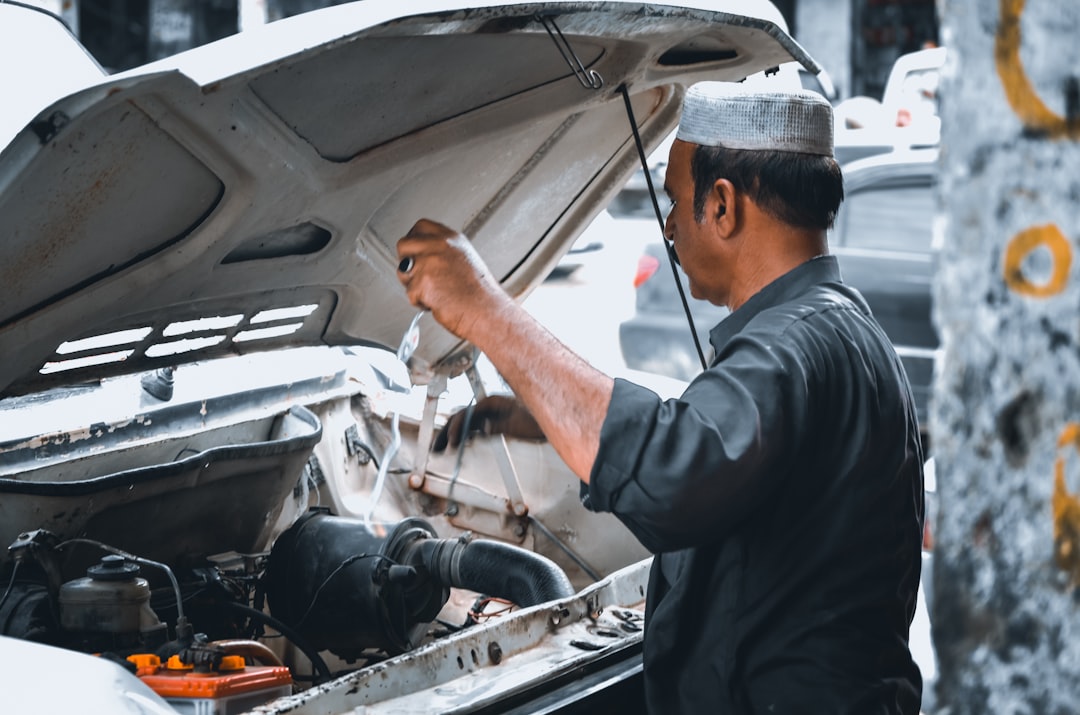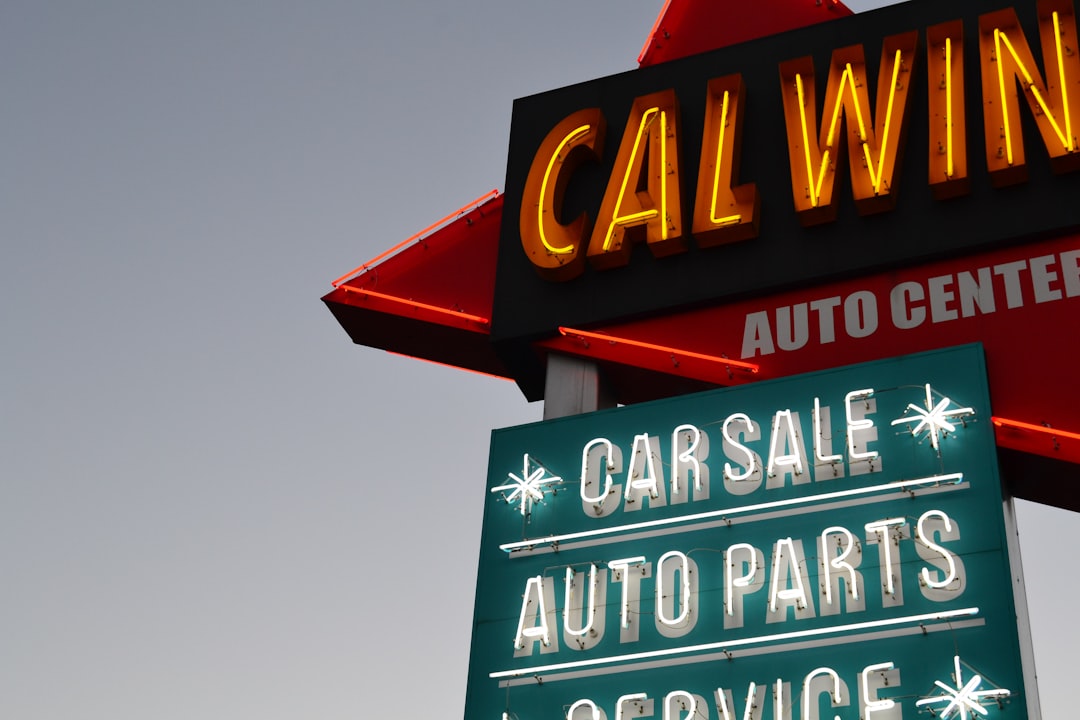

Engage prospects with a scan and streamline customer engagement with FREE QR code marketing tools by Sona – no strings attached!
Create a Free QR CodeFree consultation

No commitment

Engage prospects with a scan and streamline customer engagement with FREE QR code marketing tools by Sona – no strings attached!
Create a Free QR CodeFree consultation

No commitment
For car dent repair shops striving to compete in a crowded market, harnessing digital innovation is no longer just a preference; it is a necessity. Many businesses still rely on traditional strategies like flyers or printed estimates, even as automotive marketing shifts toward measurable, mobile-first tactics. When people notice a dent or ding, most turn immediately to their smartphones, seeking quick solutions, transparent pricing, and the fastest way to schedule repairs.
QR codes have rapidly emerged as a practical bridge between offline and online touchpoints for car dent repair shops. They solve common frustrations such as outdated contact forms, missed review opportunities, and inefficient appointment scheduling by delivering seamless digital experiences at the point of need. Whether directing in-shop customers to book follow-ups, enabling mobile teams to gather instant feedback, or offering personalized discounts during on-site repairs, QR codes reduce friction and accelerate key actions, bypassing the complexity of apps or manual processes.
Embedding QR codes throughout the customer journey allows car dent repair businesses to respond instantly to consumer intent, strengthen data collection, and deliver modern, connected experiences. This guide will show how car dent repair shops can deploy QR codes to address lost opportunities, improve operational efficiency, and unlock measurable marketing returns, meeting the expectations of digitally empowered customers while solving longstanding industry pain points.

Car dent repair shops often grapple with leads slipping through the cracks: forms left incomplete, paper estimates misplaced, or customers walking out before scheduling a service. These disconnects hide high-value prospects and make follow-up inconsistent or impossible. QR codes close this gap by turning every surface into a direct path to action. A scan can open a mobile-friendly quote form, schedule a repair, start an insurance claim, or trigger a review request in seconds.
Replacing analog processes with QR-enabled flows increases response speed and visibility. Printed brochures become interactive guides with “Scan to get a photo estimate.” Paper sign-up sheets give way to on-the-spot forms that capture accurate contact data and vehicle details. Reception counters, waiting areas, and mobile vans can all carry clear calls to action that match customer intent. With dynamic codes, you can update destinations without reprinting, and with platforms like Sona QR’s product overview, you can track scans and downstream actions to inform smarter decisions. Start creating QR codes for free.
Transitioning from traditional intake to QR-enabled flows improves lead visibility, accelerates decision-making, and equips shops to identify and contact the real decision-makers. By meeting customers at the precise moment of intent, you position your shop to win more appointments and increase average order value.

In car dent repair, intent is often immediate. A customer notices damage in a parking lot, snaps photos, and seeks instant clarity on cost and timing. If your shop cannot capture that moment, the prospect may move on. QR codes convert fleeting interest into structured actions that your team can track and serve. Adding codes to in-shop signage, mobile vans, invoices, and event materials unlocks a simple, familiar way for customers to engage without typing URLs or downloading apps.
QR codes also provide operational flexibility. Offers and schedules change frequently in this business. Dynamic codes allow you to update destinations instantly, ensuring every printed asset remains relevant. When integrated with a platform like Sona QR, you can analyze scan patterns, refine messaging, and route prospects to the right next step based on location and time. Over time, this allows you to build a feedback loop that improves both marketing performance and the customer experience.

Not all QR codes are the same. Matching the right format to the right job ensures customers get what they expect and your team captures the right data. For dent repair, the most useful formats make it easy to request quotes, book appointments, and leave reviews, all from a phone.
Dynamic QR solutions help you update destinations without reprinting, run A/B tests, and analyze behavior. Sona QR supports all of these formats in one place and provides analytics so you can see which format and placement drive higher conversion, not just more scans.

Growth depends on finding and activating the moments when customers are most likely to take action. QR codes help you insert measurable calls to action into those exact moments, whether the customer is at your counter, in a waiting room, or passing your mobile van in a parking lot. By deploying multiple placements with different CTAs, you create a network of opportunities that capture intent and minimize leakage.
Consider the physical flow of your customers and team. Guests entering the shop need clarity on process and pricing. Waiting customers may be open to booking add-on services like headlight restoration. Mobile technicians meet people at homes and workplaces where quick digital interactions are ideal. Each environment deserves its own code, message, and destination.
Each well-placed code turns anonymous interactions into leads that you can track, segment, and nurture. It also allows you to test placements, offers, and messages so you can invest where results are strongest.

The best QR deployments map to moments that matter in your customer journey. For dent repair shops, this typically means accelerating quotes, facilitating claims, and capturing reviews quickly and consistently. When designed correctly, these use cases simplify life for customers and staff while improving revenue, reputation, and retention.
Start with a few core use cases and expand over time. Early wins provide data and confidence to roll out more placements, more offers, and more sophisticated workflows that connect offline activity with online systems.
These use cases address persistent pain points like delayed outreach, missed high-value prospects, and underused post-service touchpoints. They also establish a foundation for advanced segmentation, retargeting, and attribution.
Every scan creates a signal: who engaged, where they engaged, and what they wanted. When you deploy unique codes for different placements and actions, you naturally build segmented audiences based on real behavior. Retargeting those segments with messages that fit their context increases relevance and reduces wasted spend. For tactics, see intent-driven retargeting from Sona.
Integrate scan data into your CRM and ad platforms to automate timely follow-ups. For example, a scan on a flyer might trigger a nurture sequence with educational content, while a scan on an invoice could trigger a review prompt or a maintenance reminder. With Sona QR, each scan carries metadata you can use to personalize follow-up across email, SMS, and paid media.
For car dent repair, consider segments like walk-in visitors versus mobile-service prospects, insurance-supported repairs versus out-of-pocket jobs, and new customers versus returning clients. Each segment deserves distinct messaging that addresses price sensitivity, scheduling needs, or claim complexity.
QR codes unify offline and online channels by providing a fast path from attention to action. When you place them across every physical and digital touchpoint, you capture demand the moment it appears and direct it into a consistent, trackable journey. This improves customer experience while revealing which channels and messages deserve more investment.
Think of QR codes as connectors. A flyer at a gas station becomes a booking portal. A shop window becomes a lead generator. A receipt becomes a review engine. Each scan is a datapoint that helps you refine creative, offers, and placements. With Sona QR, you can manage codes centrally, monitor performance, and sync scan data with your analytics and CRM.
A unified approach ensures no lead is lost due to channel silos or outdated processes. It also lays the groundwork for accurate attribution and better resource allocation.
Not all QR campaigns are created equal. A disciplined process helps you launch quickly, learn fast, and scale what works. Use the steps below to structure your rollout, then iterate based on performance data.
Define the business outcome you want, such as increasing booked appointments, collecting more five-star reviews, or streamlining insurance claims. For car dent repair, a high-impact starting point is “Scan to get a photo estimate” in waiting areas and on mobile vans. Clarity at this stage makes downstream decisions easier and measurement far more meaningful.
Choose between static and dynamic codes. Static codes are fine for permanent destinations like your homepage. Dynamic codes are better for campaigns that need editing, tracking, or retargeting.
Design matters. A scannable, branded QR with a clear CTA gets more engagement than a generic black square.
Roll out placements that match your growth plan. Start with high-traffic areas and assets that already touch many customers.
Analytics transform QR from a tactic into a strategy. Use Sona QR to monitor scan volume, location, device, and downstream behavior so you can optimize continuously.
This step-by-step approach fixes chronic issues like missed leads and poor tracking. It also creates a feedback loop that improves both operational efficiency and marketing ROI with each iteration.
Without analytics, QR activity is just surface-level engagement. Car dent repair shops need to know how scans translate into quotes, booked jobs, reviews, and repeat visits. Tying scans to outcomes clarifies which placements deserve budget, which offers resonate, and what to change when performance stalls.
Modern platforms close the loop between offline and online behavior. Sona QR captures the scan event with time, device, and source. Account identification on Sona links scans to identity, website sessions, email engagement, and CRM records. The result is a connected picture of the customer journey from first scan to completed repair and beyond.
When you connect scans to revenue, you transform QR from a novelty into a predictable growth lever. You also gain the insights needed to justify spend and scale with confidence.
QR wins compound over time when you standardize best practices across your shop, mobile team, and marketing channels. Focus on clarity, speed to value, and measurable outcomes. Train staff to present QR codes as helpful tools that save time and provide transparency.
Use automation to make every scan actionable. When scans trigger emails, texts, and ad sequences tailored to the customer’s context, you reduce manual follow-up and increase conversions. The combination of thoughtful placement and automated next steps turns QR into an always-on conversion engine.
QR code success often hinges on simple, practical ideas executed consistently. The following examples illustrate how thoughtful placements and clear CTAs translate into measurable gains in reviews, quotes, and retention.
One local shop added “Scan to review” on every job closure report and invoice. Customers could upload before-and-after photos alongside a star rating. Review volume increased and the shop used the feedback to refine its customer communication playbook. This program also uncovered upsell opportunities, because the feedback form included optional questions about paint touch-ups and bumper scuff repairs.
See this dent shop case study for additional marketing ideas you can adapt.
Creative placements can also include QR codes on loaner car hang tags with “Scan to schedule your final touch-up,” on technician name badges for in-home appointments, and on magnetic panels temporarily placed on customer vehicles while they are at the shop.
QR codes are straightforward, but small details can make or break results. Common pitfalls include burying codes in busy designs, using vague CTAs, or sending scanners to generic homepages that require multiple clicks to act. Conversely, clear benefits, single-purpose landing pages, and strong follow-up workflows transform scans into conversions.
Keep your testing cadence steady. Each quarter, retire stale placements, rotate creatives, and try new offers. Monitor scanning behaviors by time of day and location. A learning mindset ensures your QR strategy evolves with customer expectations and media performance.
QR codes are transforming how car dent repair shops find, engage, and convert valuable leads in a digital-first landscape. Every scan converts previously invisible or anonymous actions into clearly measurable marketing and operational wins, whether it is new bookings, crucial feedback, or smoother insurance workflows.
By addressing challenges like lost prospects, delayed follow-up, and incomplete data, a strong QR code strategy turns every interaction, at the shop, roadside, or local event, into a well-tracked step in the customer journey. This approach closes operational gaps, strengthens marketing effectiveness, and positions car dent repair shops as adaptive, customer-focused leaders in a competitive market.
QR codes have transformed car dent repair shops from simple service providers into dynamic hubs for customer engagement and growth. By integrating QR codes, shops can effortlessly drive customer acquisition, streamline appointment bookings, and enhance post-service follow-ups—turning every interaction into a measurable conversion opportunity. Imagine instantly connecting a satisfied customer’s scan to a new booking, repeat business, or referral, all while capturing valuable data to optimize your marketing efforts.
With Sona QR, car dent repair shops gain access to dynamic, trackable QR codes that update in real time without the need to reprint materials. This means you can launch targeted campaigns, monitor scan activity, and directly link every interaction to revenue growth—all from a simple dashboard. Don’t let another potential customer slip away; start for free with Sona QR today and turn every scan into a step closer to your next repair job.
You can find reputable car dent repair shops near you by searching on your smartphone for shops that offer quick solutions, transparent pricing, and easy appointment scheduling, often enhanced by digital tools like QR codes.
Costs vary, but many car dent repair shops use QR codes to provide instant, photo-based quotes, enabling customers to get transparent pricing quickly and conveniently.
The article does not detail the paintless dent repair process, but emphasizes digital innovations like QR codes for estimating and booking repairs rather than specific repair techniques.
Look for mobile dent repair services that use digital tools such as QR codes on their vehicles or promotional materials, allowing you to scan for fast quotes, easy booking, and instant contact information.
Mobile dent repair services offer convenience by meeting customers at homes or workplaces and often use QR codes for quick digital interactions, enabling fast quotes and scheduling without visiting a physical shop.
Use Sona QR's trackable codes to improve customer acquisition and engagement today.
Create Your FREE Trackable QR Code in SecondsJoin results-focused teams combining Sona Platform automation with advanced Google Ads strategies to scale lead generation

Connect your existing CRM

Free Account Enrichment

No setup fees
No commitment required

Free consultation

Get a custom Google Ads roadmap for your business






Launch campaigns that generate qualified leads in 30 days or less.
